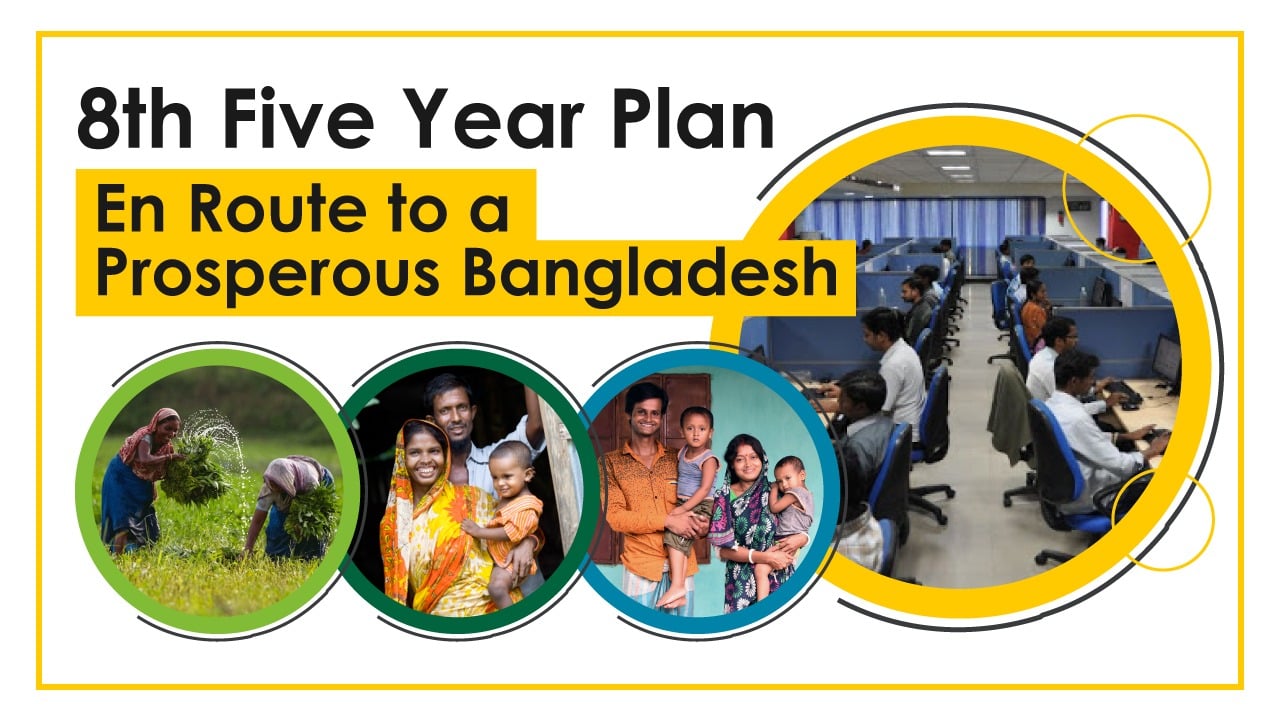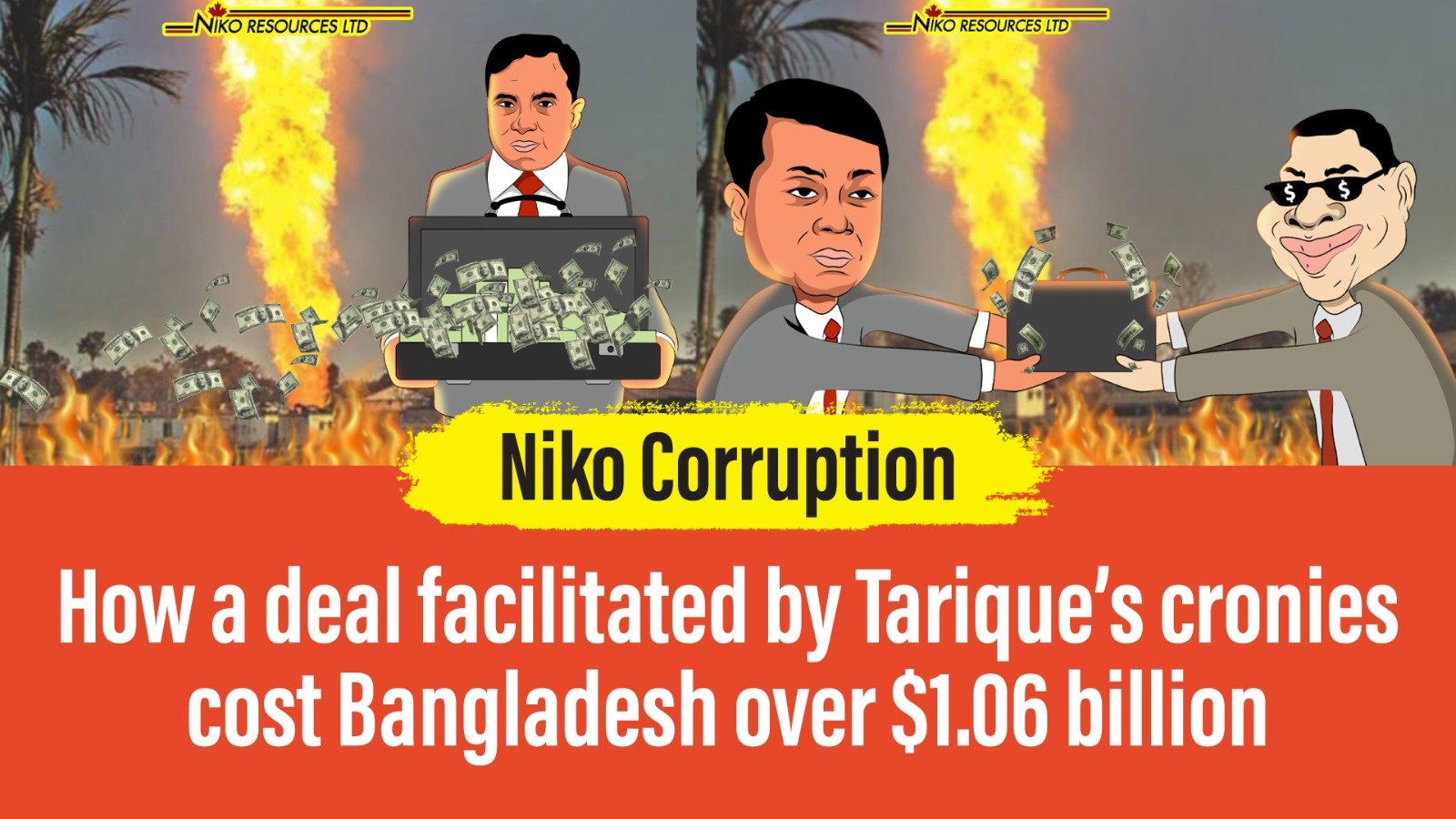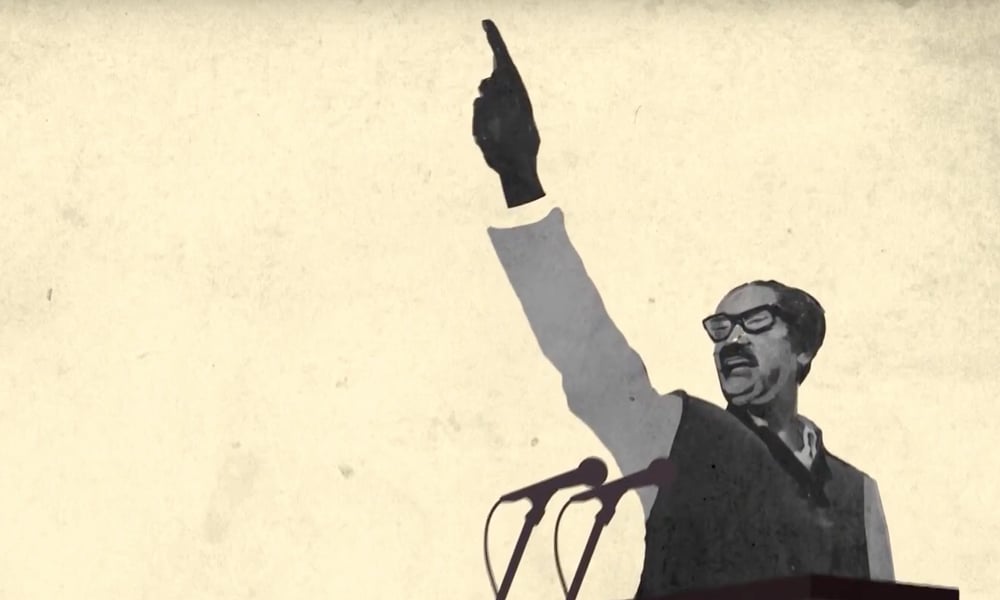4630
Published on January 20, 2016Introduction
With the economy growing annually over 6%, living standards rising for most people and the country maintaining stability throughout 2015, Bangladesh has in recent times been dubbed a development role model having produced consistent progress in economic, social and human development indicators.In continuation of the profound transformation the county has undergone since the Awami League led government assumed office for the second straight term in January 2014, the nation has been elevated to the lower middle income status in 2015.
Remarkable progress has been achieved for having decreased unemployment and poverty, as well as developing a pluralistic healthcare, extending electricity coverage, enduring quality education for all, revamping infrastructure and steppingup the country's digitization aspirations. Moreover, the country emergedas the developing world’s biggest success stories in attaining most of the Millennium Development Goals (MDGs) and has set new lessons for the world in achieving the recently adopted Sustainable Development Goals (SDGs).
The architect of this surprising model of development isHonourable Prime minister Sheikh Hasinawho has set the blueprint with her charter of change “Vision 2021”, the manifesto envisaged and declared by her party before the ninth national parliamentary election. By breaking with orthodox models for progress, HPM Sheikh Hasina, since then, has been helping to forge a new Bangladesh centered on building a middle income nation by the 50th anniversary of our independence and a developed nation by 2041.
Buoyed by this momentum of growth, an overwhelming majority of Bangladeshis appear content to have HPM Sheikh Hasina in charge. A poll released by  Nielsen-Bangladesh in last December, echoing previous surveys, gave her an impressive 67% approval rate with equal measure of support for the Awami League led government. On top of that, another survey, commissioned jointly by, British Council, ActionAid Bangladesh and the University of Liberal Arts Bangladesh (ULAB), revealed in last September that, 75% youths see the country as a more prosperous nation in the next 15 years under the Awami League government.
Nielsen-Bangladesh in last December, echoing previous surveys, gave her an impressive 67% approval rate with equal measure of support for the Awami League led government. On top of that, another survey, commissioned jointly by, British Council, ActionAid Bangladesh and the University of Liberal Arts Bangladesh (ULAB), revealed in last September that, 75% youths see the country as a more prosperous nation in the next 15 years under the Awami League government.
In a series of special reports, we will highlight the activities and achievements which took place in an array of sectors in2015. The first of our twelve special reportslooks at the milestone achievements and development of the power, energy and mineral resources sectors in the last year.
Allocation and Perception
To achieve its electoral promise “Electricity for all by 2021”, the government has doubled the allocation for the power and energy sector in this fiscal year. The allocation stands at $2.39 billion which is 6.3% of the total budget. On top of that, according to a survey, jointly conducted and released in September by MIDAS and Power Cell, an overwhelming majority (76.66%) of Bangladeshis expressed their happiness with the policies the Awami League government has devised and is implementing with an aim to bring every house under electricity coverage. 72.33% countrymen termed the present service as good over the past.
Record Electricity Generation
In 2009, the country had a meager 4942 megawatts electricity generation and more than half of the population was deprived of the access to electricity. Back then, debilitating power crisis plugged the country, bringing down the industrial production to its knees. Due to frequent black out, people were forced to take to streets in protests every day. But those days are gone now. In 2015, the country has seen generation capacity double to 14,077 MW with 75% people gaining access to electricity. Maximum electricity generation stood at 8,177MW last year. As a result, per capita generation marked a significant rise, going to 371 kilowatt/hour, up from 321 kilowatt/hour in 2013. In last two years, over thirty million new people were provided with new power connection through expanding new transmission lineson a stretch of 42,000 KMs.
Bringing Off-Grid Areas Under Coverage
Last year saw the Rural Electrification Board (REB) launch an unique scheme aiming to light up the houses of people staying in the outreached areas across the country. Initially introduced in Mushiganj district, this endeavour has resulted in providing connection to 8,00,000 new households last year. By 2021, this programme will bring fruition to 18 million households residing in 90% off –grid areas. In the last five years, the REB has installed 34,3487 km distribution line offering electricity to 2,223 villages.
100 Power Plants
On August 10, the number of power stations has risen to 100 in Bangladesh after Prime Minister Sheikh Hasina opened three more stations in Ashuganj with a combined capacity of 475MW. As many as 11 power plants having generation capacity of 1,798 MW were constructed. Between 2009 and 2015, the government has constructed 77 power plants with generation capacity of 6,306 MW that added 6,806 MW electricity to the national grid including 500 MW imported power from India during the period.
Besides, the government signed agreements to construct 77 power plants with capacity of 11,408 MW both in public and private sectors, of which 52 plants with capacity of 5,287 MW joined operational activities, while the rest 25 plants having capacity of 6,082 MW are under construction. Moreover, some 22 power plants with generation capacity of 7,848 MW are under process for tender floating and six more plants with 4,685 MW capacity are underway for planning. In addition, the World Bank has approved an additional $177 million fund for the construction of a 335-megawatt combined cycle power plant at Siddhirganj, near Dhaka.
Seventh Five Year Plan: 12,853 MW by 2020
According to the seventh five year approved in 2015, the target has been set to increase power generation by 12,853 MW over the next five years, 40% of which will be provided by the private sector. The power sector will require investments worth $ 21.22 billion, 50% of which will come from the private sector. To that end, decision has been taken that the high-cost fuel-based power generation will be gradually phased out and so will the low-cost gas-based ones. In the last two years of the five-year plan, around 6,000MW of fresh power will be added to the national grid, most of which will be from imported coal and liquefied natural gas or LNG. During the 2016-2020 plan period, domestic gas will be replaced as the primary source of energy. Specific policies for gas allocation and domestic gas exploration, domestic coal utilization, energy import, improved cooking stove and energy subsidy pricing are on the cards.
Rooppur: Going Nuclear
Towards making the dream of building the country’s first ever nuclear plant project a reality, the Cabinet, in December, approved the largest power plant of Bangladesh to date, the 2,400 MW Rooppur Nuclear Power Plant. This go ahead nod has cleared the way for Bangladesh Atomic Energy Commission to strike a deal with Russian builder ASP, a subsidiary of Russian state nuclear power company Rosatom. In last May, the draft of “Nuclear Power Plant Ordinance 2015” was endorsed, giving the project a legal foothold. Under the Act, Nuclear Power Company of Bangladesh would be set up.
Bangladesh Atomic Energy Commission is authorized to own the plant while the Nuclear Power Company is entitled to run it. In October, Russia agreed to educate and train the country’s nearly 1,600 students of the sciences at one of its renowned nuclear power and engineering university to create a pool of experts for the nuclear power plant. This three year programme will allow students to get waiver in their tuition fees; avail free accommodation and subsidized food.
To be built at a cost of $12.65 billion, the plant would use a new generation reactor that has a lifespan of 60 years with an option of extending it for 20 years. The reactor contains improved safety features, and its passive safety system is capable of working for 72 hours in case of any critical or emergency situation.As the first-phase work at the plant site is over, plans are laid out to build the second phase -- preparing the ground for building infrastructure. Given the rate of current progress, hopes are on the horizon that the first phase of the plant will go operational from 2021.
19,000 MW Coal Power
Given that the government has set a target and prepared a roadmap to generate 19,000MW electricity by 2030, real and measurable progresses are being made throughout 2015 in building 24 coal fired plants across the country.Of those, eight are considered as mega projects with a cumulative capacity of 9,960MW. Use of Ultra Supercritical Technology was made mandatory for every plant to keep the environment safe and free from any kind of pollution.
In December last, a Memorandum of Understanding (MoU) was struck between the government and Singapore based Sembcorp Utilities Pte Ltd for setting up one of the key projects venture at Matarbari, Bay of Bengal that is capable of producing 1,400MW power.According to the project details, the international company will set up coal fired power plants under a project "700-MW Coal Fired Power Plant project (Phase-I)" and it will go operational by December 2022.For another project at Maheskhali, a survey was conducted for land acquisition while the Department of Environment has given clearance.
Another mega coal powered plant is being constructed at Rampal, Bagerhat. The government has already distributed $7 billion as compensation among the affected people for land acquisition for the plant aimed at generating 1,320-MW electricity. Already 1,834 acres of land were acquired for the cause. Moreover, 275 metre high chimneys would be used in the power plant, so that the level of air pollution comes to zero.
Besides, Indian giant Adani Power Limited, a sister concern of Adani Group, India, has sighed to install another 1,600MW ultra super critical coal based power plant at Moheshkhali or any other suitable location in the country. Talks have taken place also with another power giant Reliance, who are planning to constructs mega projects in Bangladesh to produce 3,000 MW power.
Bolstering Energy Exploration and Extraction
At the end of 2015, the daily gas productionstood at 2,700 million cubic feet (cbf), up from 1, 744 million cbf. Application of 3D seismic survey in unexplored fields covering a stretch of 3,096 square kilometers has led to the discovery of 6 new gas structures while39development wells were drilled, testing of 8 wellscompleted and anew transmission line was set up that expanded to 767 km in length. Gas compressor stations were set up in different districts to add more supply to the national grid. Three drilling rigs were added to the state run exploration company to increase its efficiency and expand its capacity.
Currently, gas supply has to feed a demand of 3 million subscribers every day. Besides, full swing works are underway to find and dig 18 development and 20 exploration wells anew respectively while11 fresh wells will undergo complete workover. Once completed, the generation capacity will scale to 325 million cubic cm. Several blocks were leased out to international companies for onshore and offshore exploration. Moreover, steps are initiated to conduct non-exclusive seismic survey on sea blocks. After a four-year break, the government, in 2015, decided to resume export of natural gas condensate (NGC), on higher receipt of the spinoff from increased gas production.
LNG terminal at Maheskhali
Qatar based RasGas Company Limited has been appointed for exporting liquefied natural gas (LNG) to Bangladesh under an agreement singed recently between the government of the two countries. All preparatory works were completed last year to get the approval for the final draft of strategy for installing the country’s maiden LNG terminal at Moheshkhali in consultation with Astra Excelerate Energy (ACE).
With the singing of a contract with Petrobangla in last February, officials of ACE have completed the Met-ocean study for installation of the Floating Storage and Re-gasification Unit based LNG terminal. The government has decided to install the LNG terminal having capacity of 1,38,000cbm for supplying of 500 per day mmscfd aimed at mitigating growing energy demand in the country. Satisfactory progresses are also being made in the installation of 91 km gas transmission pipelines with 30 meter in diameter from Moheshkhali to Chittagong.
Harnessing Power of the Solar
Given that the country has installed the fastest growing solar home system in the globe, Bangladesh has become the first country to get funds from the United Nations for its fast growing solar home systems, which are not only lighting up houses in off-grid villages but also showing the world the way to a low-carbon future. As of December, total electricity generated from renewable sources, including hydropower, is 411MW, of which 173 megawatt came from solar, wind and biogas.
Year based plan has been laid out to take the capacity to 2,000 megawatt (MW) in 2021. Moreover, plans were devised to invest USD $1billion in hydro electricity sector to set up a hydro-power company in Bangladesh which will not only generate but also import this kind of pro-environment electricity from the neighboring countries, Nepal and Bhutan. Bangladesh has joined 74 countries in signing the Energy Charter aimed at attaining sustainable energy development, improving energy security and maximizing the efficiency of production, conversion, transport and distribution.
Solar Home Systems
Works are going on full swing to set up six million solar home systems (SHSs) by 2017. However, focus has been added to solar micro and mini grids. The state owned IDCOL already set up four such grids while more such projects are underway. Approval has been given to a proposal for setting up a 200MW solar park in Teknaf of Cox's Bazar, the largest in the country, on a build-own-operate (BOO) basis with the private sector.
Solar Irrigation
Plans are set in motion to transform 3,00,000 to 4,00,000 diesel-run irrigation pumps into solar-pump for saving the cost for diesel in one side and protecting environment on the other. The REB has already set up 40 such pumps and is working for 300 more pumps with the ADB financing. Moreover, under a G2G scheme with China, works are put in place to set up 2,00,000more such pumps soon.
Eco-Friendly Cooking Stoves
An action plan was finalized by Sustainable Energy Development Authority (SREDA) for setting up 30 million improved cook-stoves by 2030. A house-hold energy platform has already been formed allowing all the institutions working on improved cook-stoves to be members of the platform. The Global Alliance for Clean Cook-Stove will extend cooperation while the secretarial supports will come from SNV, an international NGO.
Wind Power
At present works are going on for wind mapping on 13 points. Regent, an Indian company has been working for four points while works for rest nine places are conducted by US company National Renewable Energy Lab (NREL) under the USAID cooperation. Already data collections completed for eight points. In October last, a memorandum of Understanding (MoU) between Power Division and Vestas-Asia-Pacific Wind Technology Pvt Limited was signed allowing the letter to conduct Wind Resource Assessment (WRA) in two places in Patuakhali for the construction of 100MW wind turbine power plant and submit the assessment report within one year.
Energy Cooperation
A major milestone was set in motion in the regional power trading with the commencement of 500MW power trading with India. Another 100MWwill be coming from Tripura very soon while negotiations were started for another 500MW in future from Nepal. On top of that, the Asian Development Bank has announced to provide financial assistance to help increase transmission capacity of a cross-border electricity link between India and Bangladesh. During a visit to Bangladesh in last November, Bhutanese Economic Affairs Minister has proposed to provide Bangladesh with hydroelectricity at the cheapest rate. Commencement of physical implementation of the said projects would usher in a new era in the history of cross-border power connectivity in South Asia.














